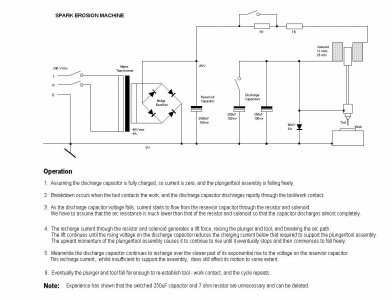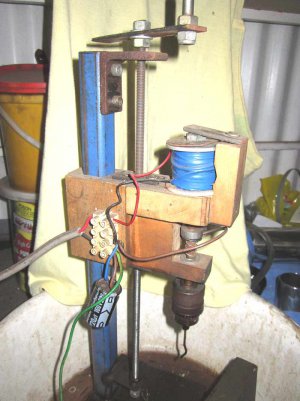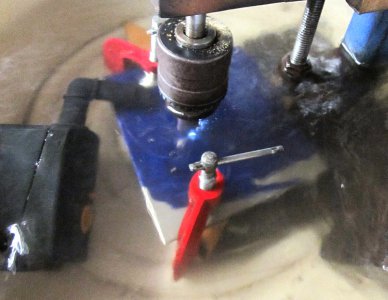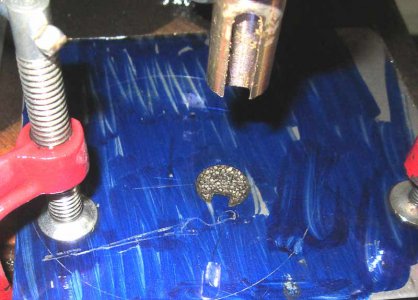To continue
I cut a chunk of brass from a failed casting that was chockers with porosity, turned it to 12mm and cut the 5mm keyway in it for a test electrode.
This stuff was like a brass sponge it was so porous.
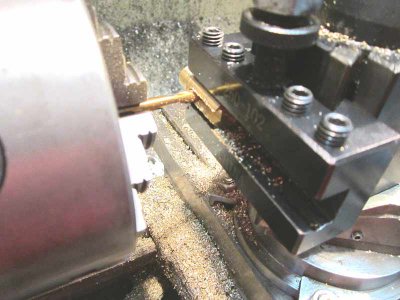
Then had to cut a 3mm keyway along the shaft of the eroder as previously I hadnt bothered with it rotating, but to burn the tab I cant allow that shaft to rotate otherwise it will destroy the tab.
As it is now apart I thought some may be interested in how simplistic it all is.
The keyway is not perfect as I stumbled a tad at one end but it shouldnt be a problem as the key doesnt reach that bit.
The small cylinder screws to the top of the shaft and is pulled up when the coil energises, the one with the flange and bolt sits in the top of the coil and acts as a magnetic amplifier (I believe but am not sure) and also acts as a stop,
The plastic disk cut from a milk bottle prevents the two steel chunks from sticking together so the assembly will fall when the coil de-energises (is that a word?) The washers and spring allow a bit of tuning to get a fast "bounce" rate and help lift the assembly.
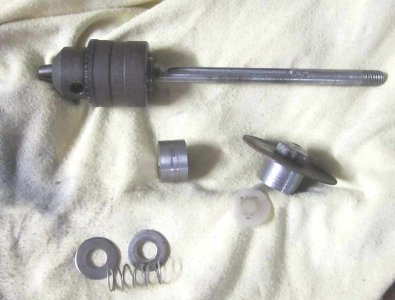
Reassembled with a bodgy adjustable key. The coil is a reel of enamel winding wire purchased from our version of radio shack with the flanges cut so it can sit close to the end and wont rotate.
The plate that holds the coil down is again adjustable so the coil can move a very small amount so the shaft/steel cylinder wont jam.
The two wooden arms that the shaft slides in have pressed in steel bushes.
The reason for the cap just hanging there is thats the one I've burnt out and it may happen again.
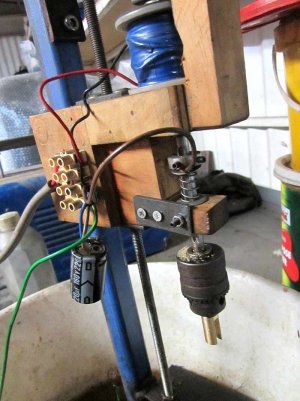
Now I have to cut the stainless and figure out how to hold it down.
Will it or wont it? Will the brass electrode dissolve? stay tuned for the next exciting episode.
 !!!!
!!!!

